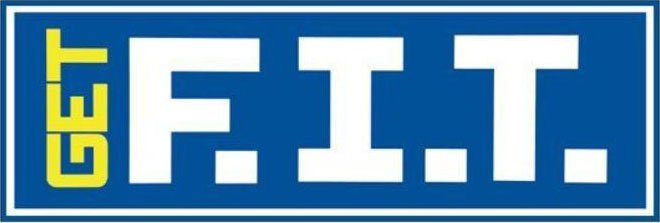What is Integrated Physical Training?
When you’ve been to the gym, you may have seen people sacrificing form to lift heavier weights, with their shoulders rolled forward or pelvic floor tilted incorrectly. They think they’re “getting shredded” from the weight, but in reality, the person is developing bad habits that may lead to serious injuries if not corrected.
If you have ever been involved with a fitness program or taken a workout class, you may have noticed there are several different kinds of movement to target various goals. Those who want to become a complete athlete who performs optimally without risking injury must follow a complete integrated training program. Even if you don’t consider yourself an “athlete,” incorporating these practices into your workout can make a huge difference.
What is integrated physical training? Our team at Get F.I.T. has the answer. Keep scrolling to learn more!
The NASM Definition of Integrated Training
Integrated training, or the Optimal Performance Training Model (OPT), is a clinically proven approach to physical fitness created by the National Academy of Sports Medicine (NASM) with the goal of rehabilitating and reconditioning an individual. While it was created with athletes in mind, it is useful for any person to decrease body fat, increase muscle, and improve overall well-being.
The 6 types of training included in this method are:
Flexibility
Cardio Respiratory
Core
Balance
Power
Resistance Training
While our method at Get F.I.T. isn’t exactly the same as the NASM method, we utilize an integrated approach that incorporates each of these training types. With our unique twist on fitness training, we’ll assess your unique physique and current fitness level to build a program that works for your body.
The 6 Components of Functional Integrative Training
For a comprehensive approach to your training, you should incorporate all of the following kinds of exercise into your routine.
1. Flexibility
Before and after each workout, you should take time to warm up and cool down your body with dynamic and static stretching. Prior to stretching, use a technique such as self-myofascial release with foam rollers and other tools to help release tension and increase blood flow. Self-myofascial release and stretching have many benefits for the body including:
Correction of muscular imbalances
Improved range of motion
Released muscle tension pain
Improved neuromuscular efficiency
Eased joint stress
After a 5 to 10 minute cardio vascular warm up such as a light jog or biking and myofascial release, stretch out the chest, back, glutes, quadriceps, hamstrings, and calves.
2. Cardio Respiratory
Cardio respiratory exercises are beneficial for all people, as this can help you improve the amount of oxygen you can take in while exercising as well as how quickly your heart rate returns to normal after intense exercise. Especially if you’re an athlete, a quick recovery time is ideal to perform better than your opponents.
If you need something easy on the joints, try bicycling and swimming. If you’re looking for a greater challenge, incorporate jump roping or wear a sweat suit to weigh you down.
3. Core
The core is the center of stabilization for all movement. It includes your abdominals, spine, chest, back, shoulders, and glutes. Pretty much every action your body can take requires these muscles to either work against or with one another. A push up or plank is an exercise that engages all of these muscles.
Core exercises will improve your overall balance and stability through training of the pelvis, hips, and abdomen. A strong core will:
Support good posture
Protect your organs
Reduce pain
Increases your power
Helps you age with ease
4. Balance
Balance exercises control your body’s position within a space. They are important for building strength in tiny stabilizer muscles that surround your ankles, knees, hips, elbows, and shoulders. These joint muscles are all more susceptible to injury, so it’s important to pay extra care and attention to them in a therapeutic way.
By “pre-habbing” these sites, you can better avoid injury and in the case of injury, have a speedy recovery.
Balancing exercises can improve your body awareness, coordination, joint stability, reaction time, and your overall wellness.
5. Power
Power in physical training is defined as energy or force. Many ball sports, such as football and basketball, require extensive power. Strength combined with speed produces power, so exercises that involve a medicine ball or jumping with weights are effective for power building.
6. Resistance Training
No matter who you are or what you do, resistance training can build muscle, support bone density, and improve endurance. Resistance training can be performed in conjunction with flexibility, balance, core, cardio, or power training.
Form is the most important thing when completing resistance exercises. Never compromise your form because you think more weight is more effective. People commonly injure themselves from not engaging the proper muscles, aligning their body incorrectly, and lifting weight past their limits.
When beginning on your resistance training journey, we recommend being evaluated by a professional to ensure you are exercising healthily. If you have previously been injured, this is even more essential. Our trainers at Get F.I.T. are ready to help you train hard, train smart, and feel great. Call (813) 445-3027 to get started.
Get F.I.T. Through a Well-Rounded Routine
Whether you can’t remember the last time you exercised, or whether you are a pro athlete, an integrative approach to fitness can help you reach your goals and perform your best. When you focus on all six types of training, you set your body and mind up for success both in the gym and in life.
Our hybrid training model at Get F.I.T. meets you where you’re at and provides you with a custom, personalized plan of action to reach your ideal body. Our holistic, systematic approach prioritizes healing and feeling amazing above all else.
Ready to feel strong, fast, and fulfilled? Contact our trainers at Get F.I.T. to schedule your consultation - (813) 445-3027.


